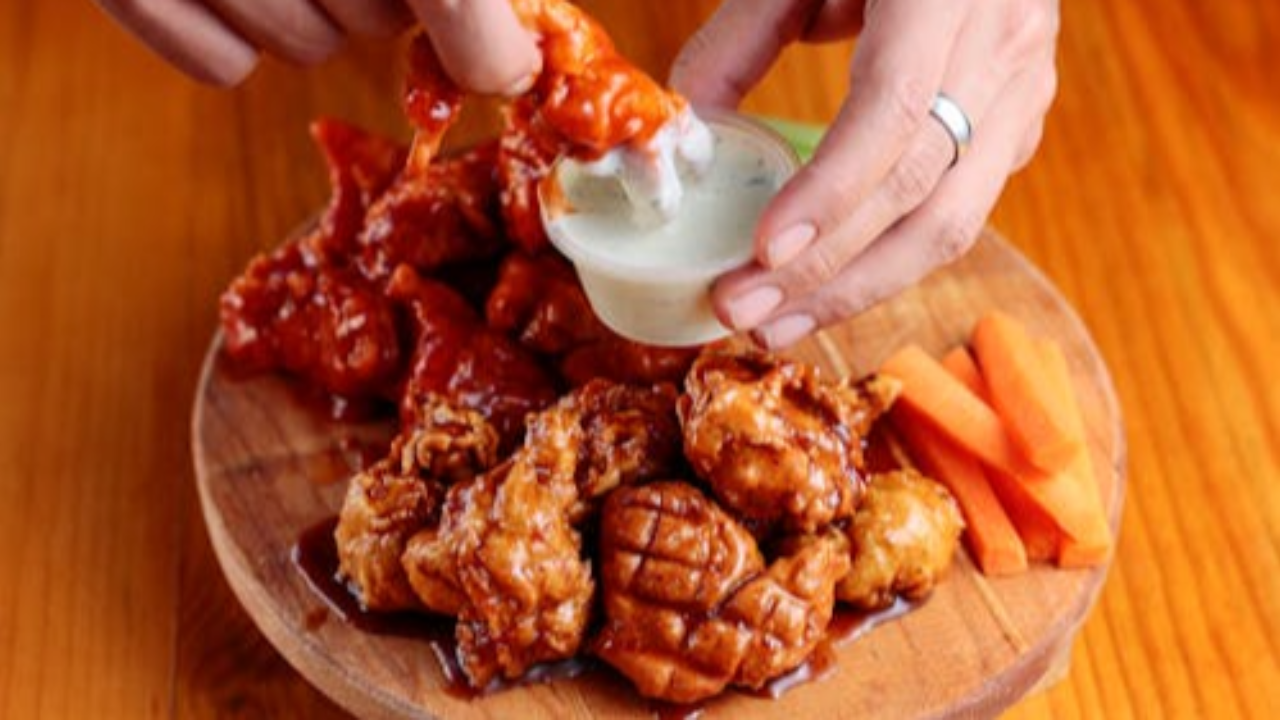Diabetes Friendly Grocery Finds at Publix
Featured Snippet: Discovering the right foods is key to easy blood sugar management. A diabetes dietitian recommends prioritizing high-protein, low-carb snacks like Safe Catch Tuna and Quest Protein Milkshakes to minimize blood sugar impact and simplify T1D meal planning or T2D meal planning.
Living with diabetes, whether it’s Type 1 diabetes (T1D) or Type 2 diabetes (T2D), can feel like a constant balancing act. Individuals with diabetes often find themselves checking labels, counting carbs, and constantly questioning how a specific food will affect blood sugar. It is a demanding process, especially when balancing it with school, social life, and other responsibilities.
That’s where a great diabetes dietitian comes in. They serve as a guide and resource, leading people to simple, delicious options that help keep blood sugars steady. As a Registered Dietitian, certified Diabetes Educator, and someone living with diabetes, this professional understands the daily challenges involved...
Thrive in Relationships While Living with Diabetes
Navigating a relationship when one partner has Type 1 diabetes (T1D) or Type 2 diabetes (T2D) requires open communication, planning, and mutual support
The non-diabetic partner must discover the daily challenges, and the partner with diabetes to learn to own their condition and communicate their needs early on. Unlock a stronger relationship by making diabetes a manageable part of life, not the focal point.
Understanding the Day-to-Day
For those who don't live with Type 1 diabetes dietitian or Type 2 diabetes dietitian patients or a loved one who has it, it’s difficult to fully grasp the daily reality of the condition. Even medical professionals, clinical knowledge doesn't fully prepare them for the everyday reality, but years of education provide a strong foundation for managing emergencies like DKA (Diabetic Ketoacidosis). However, seeing the condition lived out day-to-day, like through dating and living with someone who has T1D, offers an entirely different, deeper understanding....
Quick Diabetes Meals at Target
Featured Snippet: Discovering easy, blood sugar management tips and grocery store staples is key to successful T1D meal planning and T2D meal planning. A diabetes dietitian recommends focusing on high-protein, low-carb options like lightly breaded chicken strips, protein pastries, and Greek yogurt drinks to simplify carb counting for diabetes and make grocery shopping on a budget easier.
Living with diabetes, whether it's Type 1 (T1D) or Type 2 (T2D), comes with daily challenges. You're constantly thinking about food, medications, and how to keep your blood sugar in check. It can feel overwhelming! That’s where a professional, often called a Diabetes Educator or a Type 1 diabetes dietitian or Type 2 diabetes dietitian, becomes indispensable.
One of the biggest hurdles is finding quick, satisfying meals that don't cause blood sugar spikes. To help boost your blood sugar control without breaking the bank or spending hours in the kitchen, a registered dietitian who is also a certified D...
Costco Finds for People Managing Diabetes
This isn't about giving up your favorite foods
It's about learning the simple, proven strategies that can boost your energy, stabilize your blood sugar, and give you back your freedom. A specialized T1D dietitian or T2D dietitian is your ultimate guide, helping you translate confusing medical advice into real-world, budget-friendly meal solutions.
Eating well shouldn't break the bank or take all day. A core part of T1D meal planning and T2D management is finding convenient, nutrient-dense foods. Here are four fantastic staples a Type 1 diabetes dietitian would stock up on to make easy diabetes-friendly meals a reality:
- Safe Catch Tuna: This is an incredible source of pure protein with zero carbs and minimal blood sugar impact. Protein helps slow down how quickly your body digests carbs, making it a superstar for blood sugar management tips. Plus, Safe Catch tests every single fish for mercury, which is a great bonus!
- Feta Cheese: Need to jazz up a salad or a quick wrap? Feta is ...
Diabetes-Friendly Options at Whataburger
Navigating the world of fast food while managing diabetes can feel like a tricky maze
Whether you're a teen with Type 1 Diabetes (T1D) or an adult with Type 2 Diabetes (T2D), sometimes life throws you a curveball, and a quick stop at a place like Whataburger is your only option. Don't panic! Eating out doesn't have to sabotage your health goals. As a Diabetes Dietitian and certified Diabetes Educator, I’m here to show you how to make smart choices that fit right into your T1D meal planning and T2D meal planning, ensuring you can enjoy a tasty meal while keeping your blood sugar steady.
This ultimate guide is packed with easy tips to transform a typical fast-food run into a diabetes-friendly win.
The Fast-Food Fix for Diabetes
Managing diabetes at fast-food restaurants like Whataburger is easy with the right strategies. Prioritize high-protein, lower-carb options like the Grilled Chicken Sandwich (bunless) or the Cobb Salad with grilled chicken, which help stabilize blood sugar and ...
T1D vs T2D: Which Type of Diabetes Is Harder to Manage?
Diabetes affects millions of people worldwide, but not all types are managed the same way
Understanding the difference between Type 1 diabetes (T1D) and Type 2 diabetes (T2D) is key to knowing which type may feel harder to control.
For people with T1D, management centers on insulin dosing, carb counting, and frequent blood sugar checks. T2D often focuses on meal planning, physical activity, and medication adherence. A diabetes dietitian or diabetes educator can simplify meal planning, blood sugar monitoring, and daily management for either type, guiding you toward easy diabetes-friendly meals and practical lifestyle strategies.
Key Differences in Management
- Autoimmune disease destroys insulin-producing cells.
- Requires lifelong insulin therapy.
- Blood sugar can spike or drop rapidly, requiring constant monitoring.
- Carb counting and meal timing are critical for preventing highs and lows.
- Caused by insulin resistance or reduced in...
How Diabetics Can Enjoy Buffalo Wings Safely

Buffalo wings are everywhere at tailgates, parties, and weekend hangouts
For someone managing Type 1 diabetes (T1D) or Type 2 diabetes (T2D), enjoying this iconic snack requires more than just luck; it requires a smart strategy. Don't feel guilty about enjoying your favorite foods! Instead, learn how a diabetes dietitian thinks about wings to keep your blood sugar balanced. This guide offers proven blood sugar management tips for anyone who loves a good wing!
Here are the top strategies, recommended by a Diabetes Educator:
Discover the Carb-Free Nature of the Wing Itself
The biggest secret to buffalo wings is that the chicken meat and skin are naturally carb-free. This is huge for carb counting for diabetes!
- Classic Buffalo Sauce: The traditional, fiery sauce (made from vinegar, cayenne pepper, and butter) is typically very low in carbohydrates, often less than 1-2 grams per wing. This is your Quick Pick!
- Smart Sauce Choices (Sweet Sauces): Sweet sauces like Honey BBQ, Teriy...
Insulin Timing to Master Blood Sugar Control

If you are managing Type 1 diabetes (T1D) or Type 2 diabetes (T2D), insulin is a part of your reality.
Whether you take it every day or rely on medication to boost your blood sugar control, you know it’s essential. But truly understanding how your injected insulin moves through your system, the nitty-gritty timing, is the difference between struggling with surprise highs and lows and achieving smooth, steady numbers.
This specialized knowledge is the core focus of a diabetes dietitian or Diabetes Educator. They are your key partners in translating the science into personalized T1D meal planning and effective carb counting for diabetes strategies that actually fit your busy life.
Discover the Magic Behind the Medicine
In its simplest form, insulin is the vital hormone that allows glucose (sugar) from your food to enter your body’s cells, where it is used for energy. Without enough effective insulin, glucose gets stuck in the bloodstream, leading to high blood sugar.
When you inje...
Smart Carb Counting with Diabetes

It's a familiar script: You live with diabetes, and the world loves to tell you what you shouldn't eat.
Over time, this creates a list of "scary" food items you love but avoid because of the unpredictable spike they might cause in your blood sugars. But what if you could discover the simple, proven way to enjoy those occasional treats, like a classic bread pudding, without the fear?
A Diabetes Dietitian and a person who lives with diabetes is here to tell you that knowledge is power. You don't have to live in fear of food. This ultimate guide will show you exactly how to carb count for those mixed, high-carbohydrate, and high-fat foods that often make blood sugar management tips feel impossible.
This knowledge is especially vital for individuals managing Type 1 diabetes (T1D) or Type 2 diabetes (T2D) with mealtime insulin.
4 Easy Steps to Carb Counting
The key to T1D meal planning and T2D meal planning flexibility is learning to explore a mixed meal's ingredients. A dessert lik...
Blood Sugar Control & Strength Training

If you live with Type 1 Diabetes (T1D) or Type 2 Diabetes (T2D), you’ve likely been told a golden rule about exercise and blood sugar: Cardio makes it drop, and strength training makes it rise.
It sounds like a simple, easy formula for blood sugar management tips, right?
Well, what if the simple formula is often wrong? What if we told you your blood sugar might not rise when you lift weights; it might even drop?
The Great Strength Training Blood Sugar Myth
The classic belief is that lifting weights triggers a huge release of glucose (sugar) from your liver due to a surge of stress hormones like adrenaline. For many, especially those with T1D, this does happen when they lift very heavy weights or perform intense, short-burst sprints. The result? A confusing high blood sugar reading after a tough session.
But here’s the surprising secret...
1: Not All Strength Training is Created Equal
If your strength workout looks more like a high-rep, moderate-pace circuit, think lower weigh...

